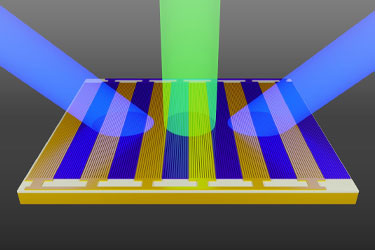Application of 5G in Intelligent Transportation System
With the rapid development of science and technology, 5G technology is changing our lives at an unprecedented speed, and intelligent transportation systems are one of the important application areas. With the continuous improvement of 5G technology, it will develop towards higher speed, lower latency, and more connections in the future.
At the same time, edge computing and network slicing technologies will be more mature, providing more targeted and reliable network services for intelligent transportation systems. Superior traffic management capabilities in 5G transportation systems can immediately adapt to changing conditions, reducing congestion and improving road network efficiency. Improves the speed at which vehicles can respond to environmental changes and commands from traffic management systems. Intelligent transportation systems, which connect vehicle communications to urban infrastructure, may expand the possibilities of smart cities with this technological advancement.

Driving upgrades in-vehicle connectivity
5G technology brings significant changes to ITS. In terms of vehicle interconnectivity, the high speed and low latency characteristics of 5G enable real-time and accurate information interaction between vehicles. Vehicles can quickly obtain information on the location, speed, and driving direction of surrounding vehicles, thus effectively avoiding collisions and improving driving safety. 5G technology has also brought many changes to the intelligent transportation system. At the same time, 5G makes remote vehicle diagnosis and maintenance possible, vehicle operating conditions can be transmitted to the maintenance center in real-time, to detect potential problems in advance, reducing the incidence of failure.
Optimize Public Transportation Services
In public transportation, 5G technology can realize real-time monitoring and scheduling optimization of buses. According to passenger flow and road conditions, bus schedules and routes can be reasonably adjusted to improve the service quality and operational efficiency of public transportation. It also enables seamless communication between vehicles and infrastructure, such as interaction between vehicles and road signs and traffic signals. In this way, we can learn about the changes in traffic signals in advance, optimize driving speed, and improve traffic efficiency.
Supporting the Development of Autonomous Driving
Automatic driving is an important development direction for intelligent transportation systems, and 5G technology provides key support for it. Autonomous vehicles process a large amount of data in real time, including map information, peripheral environment awareness data, etc. The high-speed transmission and low latency of the 5G network can ensure the rapid processing and response of this data, making autonomous driving more reliable and stable. In addition, 5G technology also promotes the development of smart parking systems.
The application of 5G technology in ITS also faces some challenges. For example, the coverage of 5G networks still needs to be further expanded to ensure stable operation in complex traffic scenarios. In addition, data security and privacy protection are crucial issues that need to be safeguarded by establishing sound regulations and technical measures. We believe that by continuously overcoming the challenges in applications, we can hopefully achieve safer, more efficient, and convenient transportation.
MORE FROM WIRED

- Apple's fall event: iPhone 16 series makes a stunning debut

- Space-Time Metasurfaces: Unlocking a New Future for Wireless Communications and Optical Applications

- Novel RNA Construction Module Enables Efficient Production of High-Density RNA Microarrays
- Aug,30,2024

- Innovative Applications of Drone Technology in Agriculture
- Aug,21,2024

- OpenAI Launches SearchGPT, an Innovative AI Search Engine
- Aug,19,2024

- Google Pixel 8A: AI technology-enhanced, the king of price-performance ratio
- Aug,07,2024

- A New Process for Concrete Manufacturing: A Breakthrough in Efficient CO2 Sequestration and Quality Assurance
- Jul,25,2024